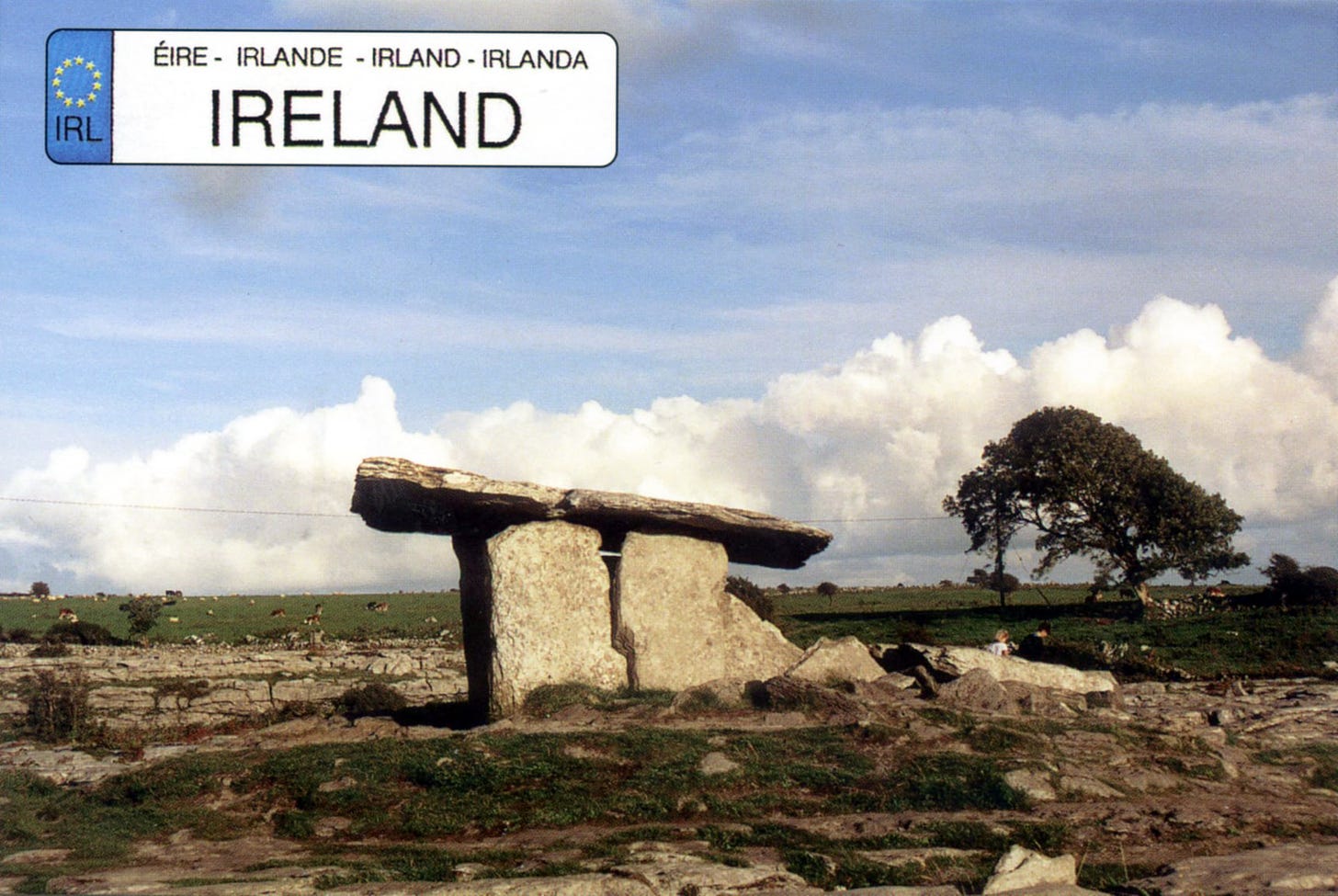The Poulnabrone Dolmen in the Burren
The Poulnabrone dolmen is an unusually large portal tomb located in the Burren, County Clare, Ireland. Situated on one of the most desolate and highest points of the region, it consists of three standing portal stones supporting a heavy horizontal capstone, and dates to the Neolithic period, probably 4200-2900 BCE. It the best known and most widely photographed of the approximately 172 dolmens in Ireland.
The karst setting was formed from limestone laid down around 350 million years ago. The dolmen was built by Neolithic farmers, who chose the location either for ritual, as a territorial marker, or as a collective burial site. What remains today is only the original stone skeleton. The monument would have been covered with soil and its flagstone capped by a cairn.
When the site was excavated in 1986 and 1988, around 33 human remains, including those of adults and children, were found buried underneath it, along with various stone and bone funerary items. The human remains date to 3800-3200 BCE. Many of the bones showed signs of arthritis in the upper body, and the children’s teeth showed evidence of illness and malnutrition. In most cases, the pathology and physical condition of the remains indicated lives spent in hard physical labor, and a lifespan that ended before the age of 30, despite the theory that these were apparently high-ranking individuals. Two of the bodies show major injuries: a skull and rib cage with depressed fractures, healed before death, and an adult male hip bone, pierced by the tip of a stone projectile and not healed, which means the injury occurred shortly before the time of death. The remains of a Bronze Age infant, buried 1750-1420 BCE, were also buried just outside the entrance.



